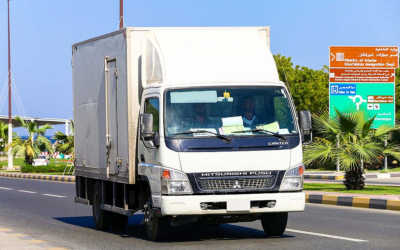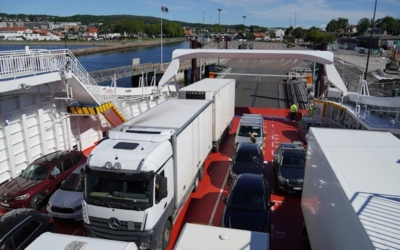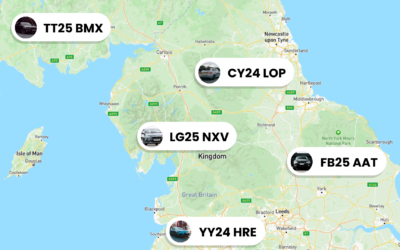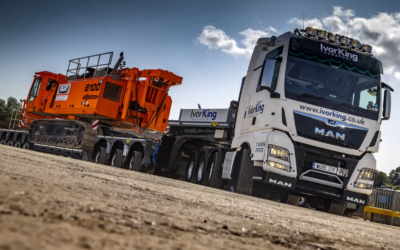Fleet Electrification: Practical Roadmap for Managers
Introduction & scope
As a fleet manager, you’re under pressure to reduce costs, meet sustainability targets and keep vehicles reliably on the road. Fleet electrification is no longer an optional conversation — it’s a strategic choice that affects operations, budgets and workforce readiness. This roadmap is written specifically for fleet managers who need practical, step-by-step guidance to evaluate, pilot and scale electric vehicles without disrupting service levels.
Purpose and audience
This guide targets fleet managers, operations leads and procurement partners responsible for day-to-day fleet performance. It focuses on decision points you control: route profiling, vehicle selection, infrastructure planning and operational changes required for a successful fleet electrification programme.
What “electrification” covers
When we say fleet electrification, we mean vehicle replacement with BEVs and PHEVs, associated charging hardware and the operational processes needed to support them. That includes depot chargers, energy management, upfits, maintenance changes and driver policies — not just buying a few vans.
How to use this roadmap
Use this guide as a practical checklist: run a pilot, measure KPIs and scale only when the data supports expansion. You’ll find actionable steps you can execute over a 30/90/180-day timeline and the metrics to watch as you progress through pilot to full rollout.
Build the business case and assess readiness
Before swapping keys, you need a robust business case. Fleet electrification decisions must rest on data: route profiles, TCO modelling and clear risk assessment. Gather the numbers first and avoid emotional or vendor-driven choices.
Route profiling and duty-cycle analysis
Start by collecting trip-level data: average daily distance, top speeds, idle time, payload and available charging windows. Use telematics and historical logs to identify routes that fit EV range profiles. Focus on repeatable routes with predictable daily mileage when selecting candidates for early pilots.
Total cost of ownership (TCO) framework
Build a TCO model that includes purchase price, incentives, energy costs, maintenance, residual value and downtime. Don’t forget infrastructure capex: chargers, construction and electrical upgrades. Run best-, base- and worst-case scenarios to understand sensitivity to energy price and residual-value assumptions.
Incentives, regulation and risk factors
Map available incentives, local regulations and potential risks such as supply delays or uncertain resale values. Consider grant programmes and tax benefits in your jurisdiction. Document risks and mitigation plans so stakeholders see you’ve covered the major unknowns before committing to fleet electrification.
Vehicle selection and pilot design
Choosing the right vehicle and framing a clear pilot are critical. The goal of the pilot is to prove assumptions about range, uptime and operating cost before large-scale spend.
Choosing the right vehicle types and specs
Match vehicle class, battery capacity and charging capability to duty cycles. Prioritise vehicles that meet daily needs with comfortable margin rather than maximum theoretical range. Consider upfit implications — refrigeration units, tail lifts and payloads change energy demand and may require bespoke solutions.
Pilot structure and success criteria
Design a pilot with a control group and clear KPIs: cost per kilometre, uptime, charging utilisation and driver satisfaction. Typical pilots last 90–180 days and include 10–50 vehicles depending on fleet size. Define go/no-go thresholds up front so you have objective decision points.
Procurement and vendor considerations
Evaluate OEM warranties, telematics compatibility and after-sales support. Check that telematics and charging systems integrate with your existing platforms — if you already use solutions for Tracking or Fleet Management, ensure vendors can connect to them. Negotiate performance clauses for battery degradation and uptime where possible.
Charging infrastructure planning
Charging is the operational heart of any fleet electrification programme. A well-planned charging strategy reduces energy costs, avoids unexpected downtime and keeps drivers productive.
Depot vs opportunity charging strategies
Decide whether you’ll centralise charging at depots or rely on opportunity/public charging. Depot charging offers better control and lower per-kWh costs but needs space and grid capacity. Opportunity charging can extend range for certain duty cycles but introduces variability and potential downtime.
Power, site preparation and grid engagement
Conduct a site audit to assess electrical capacity, earthing needs, permits and civil works. Engage your utility early to discuss load upgrades, demand charges and potential incentives. Consider phased rollouts to spread capex and allow learning between stages.
Charger selection and energy management
Choose chargers (AC vs DC) based on vehicle types and turnaround times. Implement smart charging and load management to avoid peak demand charges. Where appropriate, evaluate on-site storage or solar to reduce grid dependency and lower operating costs. For deeper technical detail, see our guide on charging infrastructure for EVs.
Operations, maintenance and workforce readiness
Operational changes are often the hardest part of fleet electrification. Maintenance requirements differ, driver behaviour affects range, and teams need new skills. Plan for these changes well before scaling.
Maintenance, parts and downtime planning
EVs have fewer moving parts but different failure modes. Build a spare-part strategy for items like inverters and chargers, and define repair workflows for high-voltage systems. Update your preventive maintenance schedules and tie them to your telematics or CMMS platform — for guidance on preventive programmes see our Preventive Maintenance Playbook.
Driver training and incentives
Train drivers on efficient driving techniques, charging etiquette and range planning. Use incentives or gamification to encourage behaviours that reduce energy use and charging time. Clear policies on charging prioritisation and reporting will reduce friction and improve compliance.
Data, telematics and operational processes
Leverage telematics to monitor energy consumption, charging events and vehicle health. Integration with existing systems (including Tracking and Dash Cameras where relevant) will help you correlate operational incidents with EV performance. If you’d like to see how integrated telematics and charging data can drive decisions, book a demo with Traknova and we’ll walk you through a pilot dashboard tailored to your fleet.
Rollout roadmap, KPIs and scaling
Once your pilot validates assumptions, prepare to scale. Structure procurement and infrastructure investment to maintain flexibility and control risk as you grow the electrified portion of your fleet.
30/90/180-day checklist
30 days: finalise pilot vehicles, install minimum chargers and run driver training. 90 days: collect baseline KPIs, refine charging schedules and begin TCO analysis. 180 days: evaluate performance against go/no-go metrics and plan phased procurement. Keep a rolling three-month action list to ensure momentum.
Metrics to monitor and decision points
Track cost per kilometre, energy cost per km, charging utilisation, vehicle uptime and driver satisfaction. Set thresholds for acceptable performance and use those metrics to decide when to scale. Regularly review residual-value assumptions and update TCO models as market data evolves.
Scaling strategy and continuous improvement
Scale by route group rather than vehicle type alone. Stagger procurement to benefit from learning and negotiate better terms with vendors as volumes rise. Establish governance for continuous improvement — review KPIs monthly and include cross-functional stakeholders for decisions about further electrification.
Conclusion & next steps
Fleet electrification is achievable with the right data, pilot design and operational changes. Start small, measure everything and scale only when your KPIs support the decision. Prioritise routes with predictable usage, invest in smart charging and ensure your team is trained for the operational differences EVs bring.
Ready to see how integrated telematics, charging visibility and fleet management tools can de‑risk your electrification journey? Book a demo with Traknova today for a tailored consultation.
Frequently Asked Questions (FAQs)
How do I know which routes are EV‑ready?
Analyse historical telematics data for daily kilometres, idle time and duty cycles. Routes with consistent, moderate daily mileage and predictable return-to-base windows are prime candidates for initial electrification.
What’s the biggest hidden cost when switching to EVs?
Infrastructure upgrades and unforeseen grid connection costs can be significant. Also account for operational changes: training, revised maintenance and potential downtime during the learning phase.
How long should a pilot run before deciding to scale?
A good pilot typically runs 90–180 days to capture seasonal variance and allow you to validate TCO assumptions. Use objective KPIs and pre-defined go/no-go criteria.
We’d love your feedback. Did this roadmap help you identify the next step for your fleet? Please share this article with colleagues and on social channels — every share helps other fleet managers navigate fleet electrification. What is the single biggest barrier you face to electrifying your fleet today? Leave a comment or contact us — we read every message and may follow up with tips tailored to your situation.
Book a consultation: If you want hands-on support, book a demo with Traknova and we’ll walk you through a customised plan for your fleet.










